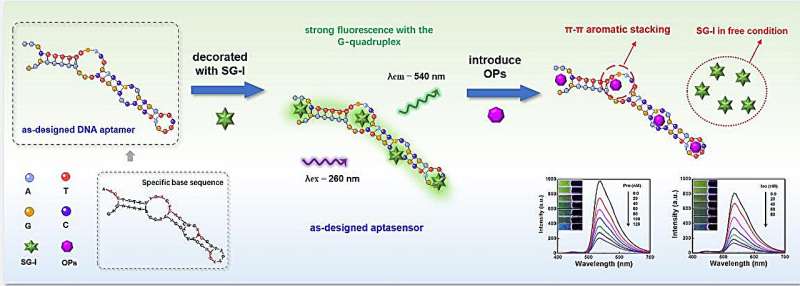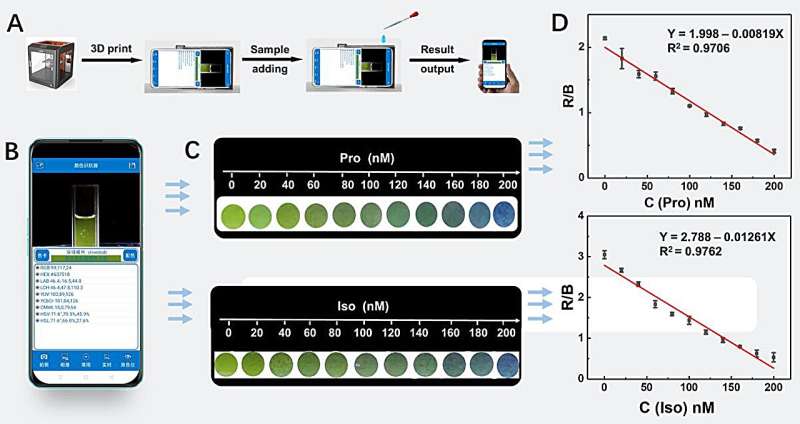This article has been reviewed according to Science X's editorial process and policies. Editors have highlighted the following attributes while ensuring the content's credibility:
fact-checked
peer-reviewed publication
trusted source
proofread
Novel sensor developed for rapid detection of harmful insecticides

A research team led by Prof. Jiang Changlong from the Hefei Institutes of Physical Science of the Chinese Academy of Sciences has constructed a visual sensing platform based on DNA aptamer-based sensing system. This sensor can be used for rapid and quantitative detection of organophosphate insecticides, such as profenofos and isocarbophos, in the environment and food.
The study was published in Analytical Chemistry.
Organophosphate insecticides, such as profenofos and isocarbophos, are widely used because of their effectiveness in controlling agricultural pests. However, excessive use can leave harmful residues that pose serious health risks. The development of accurate, efficient methods to detect these residues is critical for environmental and food safety.
Current large-scale detection tools are inadequate for on-site, rapid, and quantitative analysis. Therefore, creating a rapid, sensitive, and selective method for detecting organophosphate residues is essential to protect human health.
In this study, the researchers developed a new sensor that uses color changes to detect organophosphate insecticides like profenofos and isocarbophos. The sensor works because of a special interaction between the insecticides and engineered DNA strands called aptamers.
The sensor contains a green dye (SG-I) that fits into a G-quadruplex structure in the aptamer, causing the sensor to glow green. When organophosphate insecticides are present, they bind tightly to the aptamers, disrupting this green glow.
This binding causes the green fluorescence to fade and enhances the blue fluorescence from the G-quadruplex, changing the color from green to blue. This color change allows for the visual detection of these insecticides, with very low detection limits of 2.48 nM for profenofos and 3.01 nM for isocarbophos.

In addition, the researchers combined 3D printing technology and color-identifying application on a smartphone to develop a portable detection platform.
"It can rapidly and visually quantify the organophosphate insecticides, providing a new strategy for rapid on-site detection of pesticide residues," said Prof. Jiang.
More information: Qianru Zhang et al, Ultrasensitive Fluorescent Microsensors Based on Aptamers Modified with SYBR Green I for Visual Quantitative Detection of Organophosphate Pesticides, Analytical Chemistry (2024). DOI: 10.1021/acs.analchem.4c01307
Journal information: Analytical Chemistry
Provided by Chinese Academy of Sciences





















